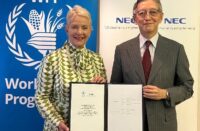By Peter OBIORA InvestAdvocate
Lagos (INVESTADVOCATE)-Effective risks management is a critical ingredient in the fight to end poverty, says a new report from the World Bank Group.
According to the World Development Report (WDR) 2014, titled-Risk and Opportunity – Managing Risk for Development says better risk management can unlock opportunities, prevent crises, and protect poor amidst disasters and shocks in the world.
The WDR 2014 says risk management can be a powerful instrument for development and as the world changes; a host of opportunities arise constantly.
“With them, however, appear old and new risks, from the possibility of job loss, crime, and disease to the potential for financial turbulence, social unrest, and environmental damage. If ignored, these risks can turn into crises that reverse hard-won gains and endanger the social and economic reforms that produced them,†the report affirmed
The report further affirmed that the consequences of mismanaged risks may destroy lives, assets, trust, and social stability. “And it is often the poor who are hit the hardest,†the WDR 2014 said.
The WDR 2014 contends that the solution is not to reject change in order to avoid risk but to prepare for the opportunities and risks that change entails.
According to the World Bank, managing risks responsibly and effectively can save lives, avert economic damages, prevent development setbacks, and unleash opportunities. “It has the potential to bring about security and a means of progress to people in developing countries and beyond,†the report said.
The WDR 2014 mentioned a few facts about risk and risk management from around the world and reported that despite some progress, many people remain vulnerable.
The report says more than 20 percent (20%) of people in developing countries live on less than $1.25 a day, and nearly 75% on less than $4.00.
It further affirmed that 70% of people in developing countries do not use formal financial tools and over 70% of the labour force in South Asia and Sub-Saharan Africa are self-employed and do not benefit from risk-sharing within firms.
The WDR 2014 says people living in fragile and conflict-affected countries made up 15% of the world population, and one-third of people living in extreme poverty in 2010.
The WDR 2014 said when risk is mismanaged, crises ensue: “more people die from drought in Africa than from any other natural hazard, whereas virtually no one has died from drought in developed countries in the past four decades,†the report said.
It said the mortality rate from illness and injury for children under age five (5) is almost 20 times higher in low-income countries than in high income countries.
While, 147 banking crises struck 116 countries from 1970 to 2011: the average cumulative loss of output during the first three years of crises in emerging markets was 26 percent.






